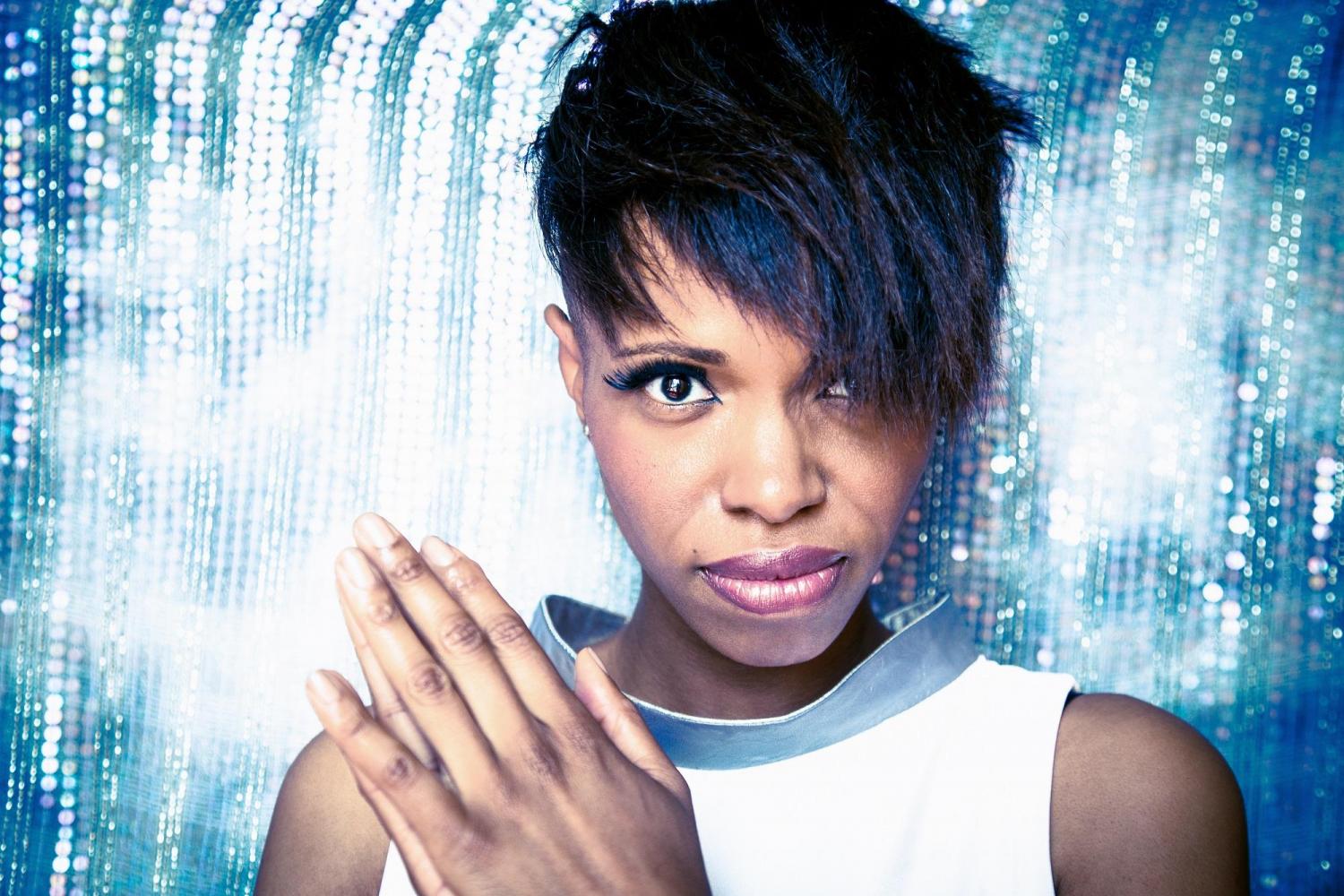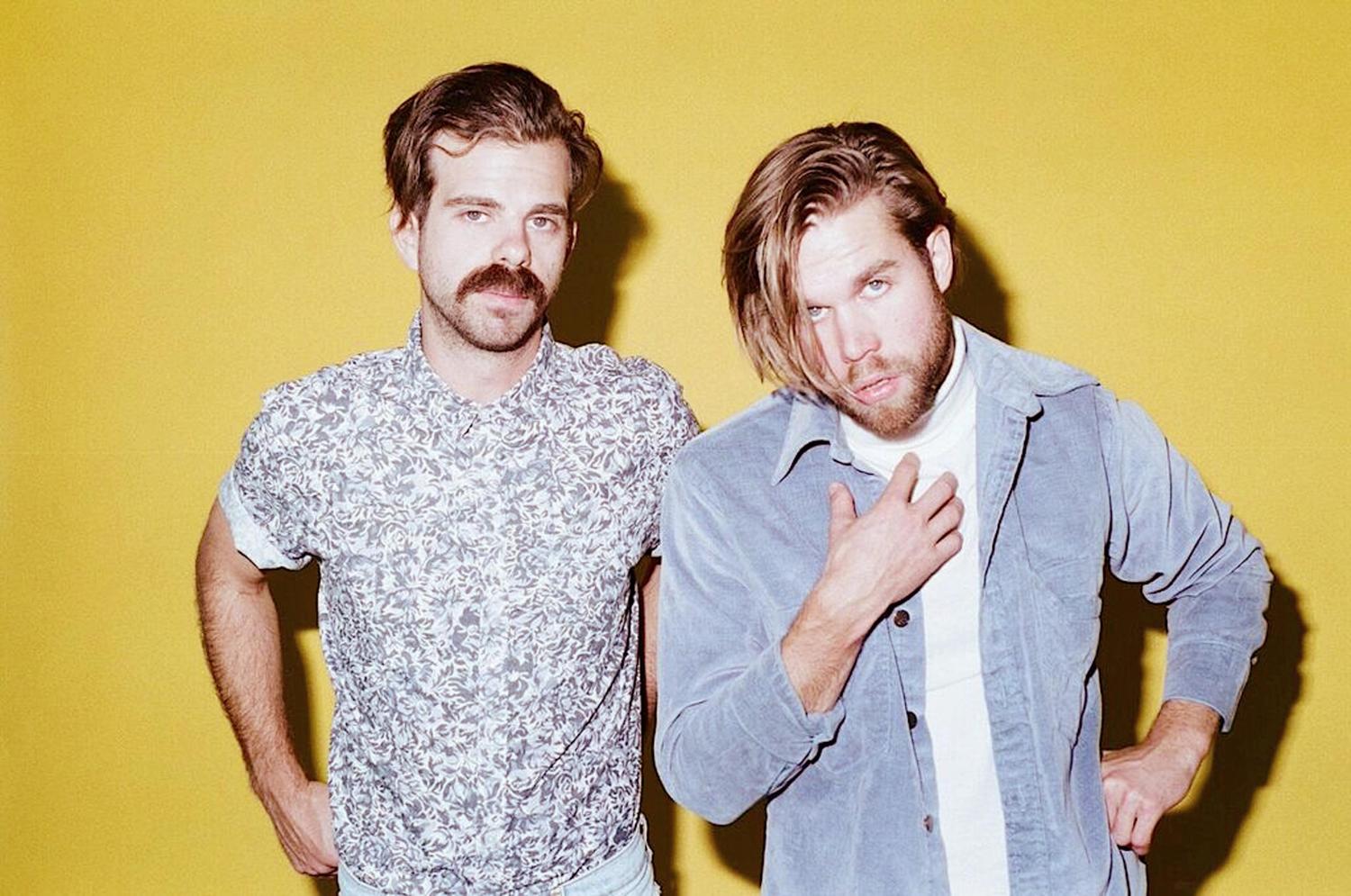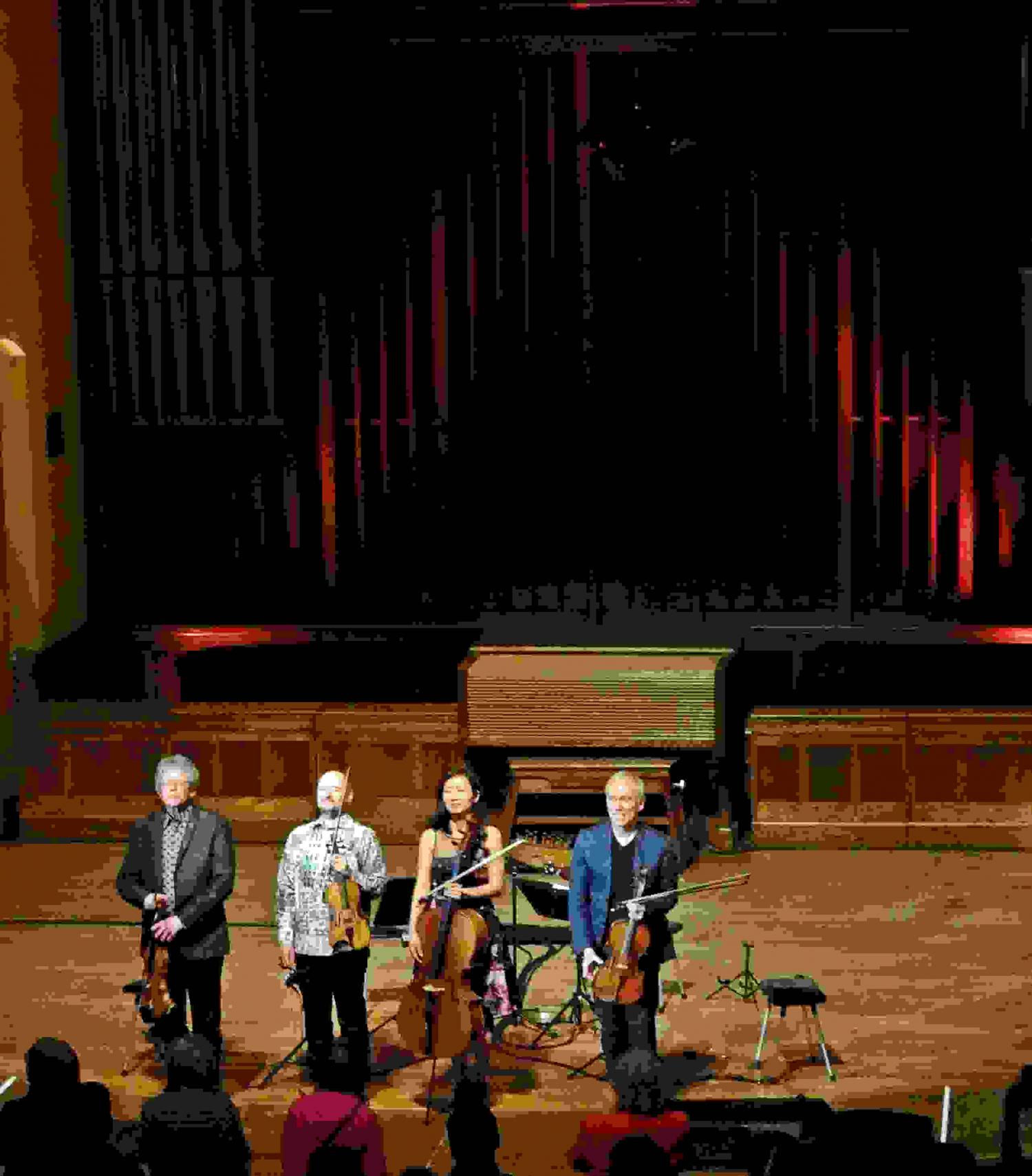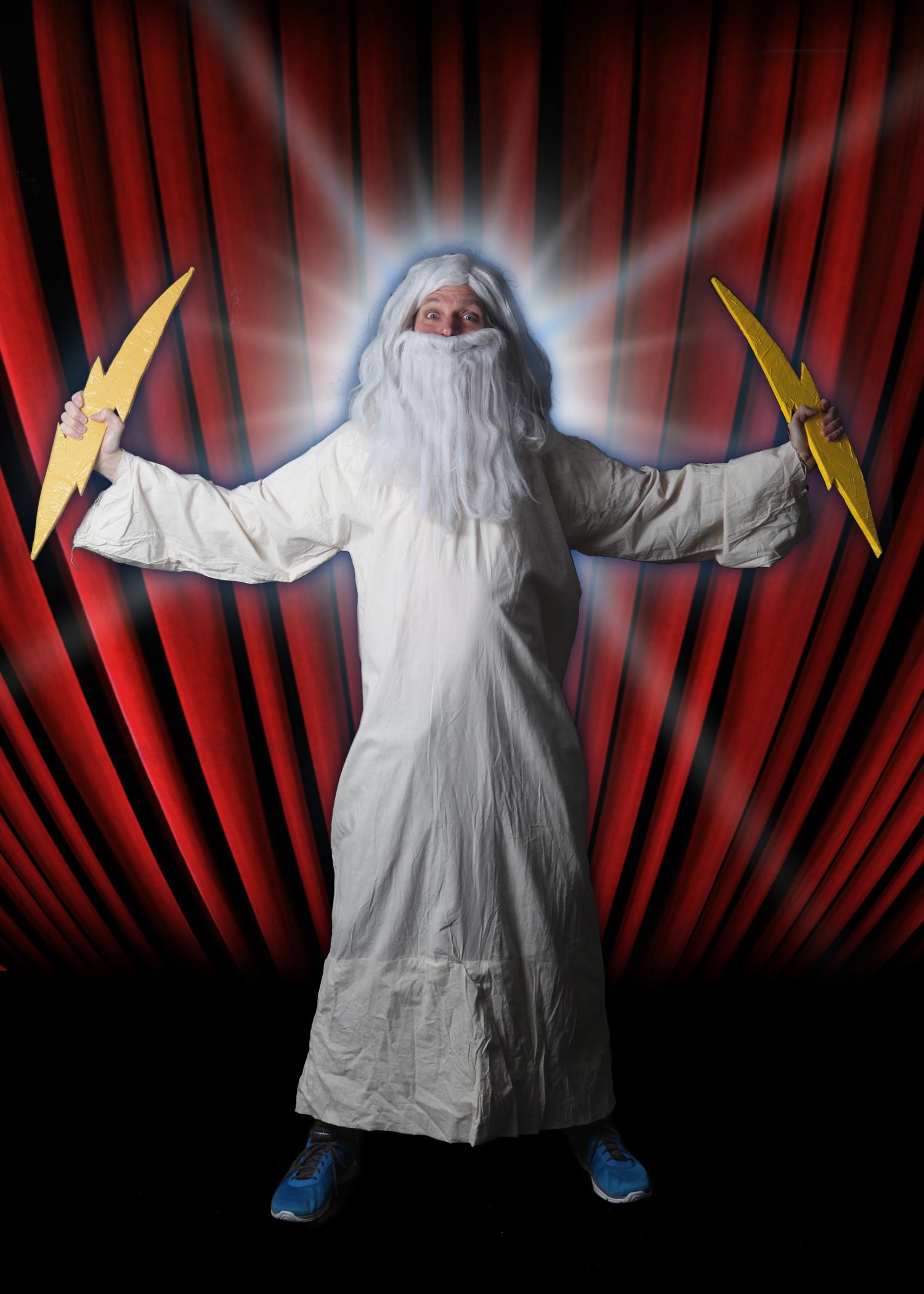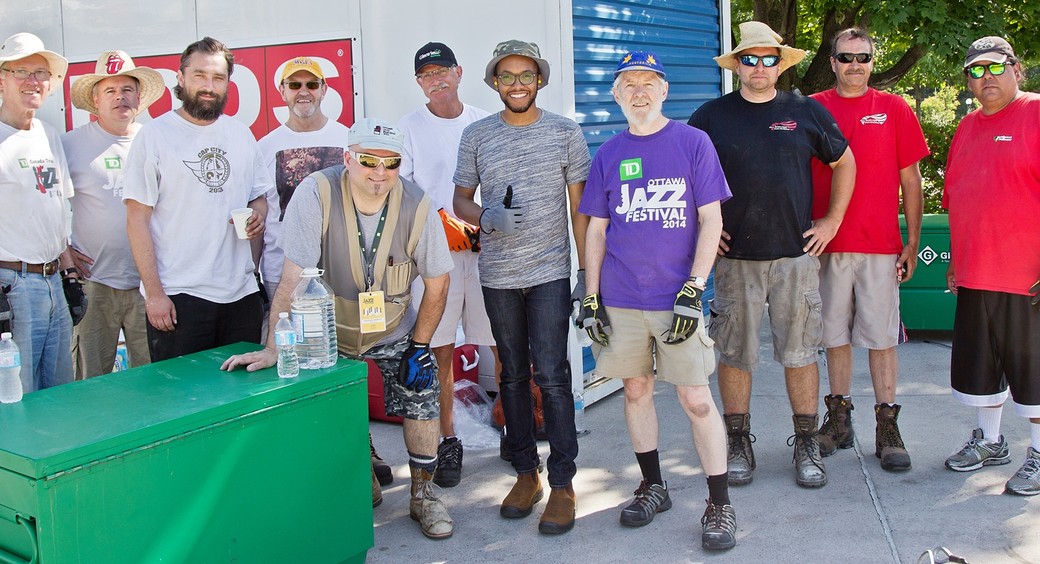
Setting the Stage for Jazz Fest
With photos by Andre Gagne and the TD Ottawa Jazz Festival.
Early morning light washes over Confederation Park. A warm June wind causes the grass to dance as a jogger passes by oblivious to the waltzing blades of green below her sneakers. A rumble is heard in the distance. The first of the crew have arrived to survey the area. With them come the forklifts, trailers and a whole lot of coffee. They’re going to need it. Soon the area becomes a collection of steel, cable and lumber. Knowing the task at hand, it is easy to break a sweat simply looking at the scattered piles but the crew has a job to do. The men gathered this morning know that soon there will be music but, right now, it’s time to set the stage.

The familiar dome-shaped covering of the TD Ottawa Jazz Festival stage is a familiar sight this time of year for those walking over the Mackenzie King Bridge, down Elgin Street or by the Canal behind the National Arts Centre. Underneath that white canopy legends have played. Musicians with names like Brubeck, Hancock, Plant and Costello or monikers like the Queen of Soul and the Red Headed Stranger. Orchestras have played beneath it, sending concertos and symphonies into the summer night. Funk charged dance parties that started there might still be going on if life and the law allowed. Old favourites, new hits and songs that defined genres have all been showcased under the lights set against the backdrop. There’s been a lot of musical history shared on that stage.
This year, the festival will see Hall of Famers, multiple Grammy winners, Order of Canada representatives, jazz, pop, soul and the blues but before that happens Chris Elms and his crew of workers will be the first to take the 40’ x 60’ stage. Take it out of a 53-foot storage trailer with a forklift a few pieces at a time, that is. A few swigs of caffeinated fuel and then to work. They don’t have time to waste.

“We get right down to it, assembling the pieces and tightening up the bolts that keep it together. The main arms that make up the structure get bolted into the concrete and sledge hammered into the grown for the anchor points,” explains Elms. “After many hours of doing this it's time to lay out the giant heavy tarps that make up the roof and connect them to the structure. We then start the process of lifting the whole thing up, one arm at a time.”

Around Elms men like Andrew Hamlin, John Messier, Riek van den Berg, Henry Jaques, John Boyle, Glenn Carroll, Trevor Gloyn, Jamie Hockin, Phil Lauzon, and Gaston Matte are doing various tasks, some already whipping their brows in the early morning heat. Two work the jackhammer, others are carrying the heavy steal that needs to be bolted together. John Cvetan asks if anybody needs any water. A couple of hands shoot up immediately to catch the ice cold bottles tossed their way. Cvetan usually works as the festival’s Volunteer Coordinator but,

today, he says he is there to help because the help is needed.
Some years, the job has been done by noon and the guys are having a beer with their lunches. This year, however, they are hoping to be finished in time to make it home for supper. Still, when it all gets put together and the first notes ring out under the dome’s amazing acoustics, they realize the work was worth it.

“I researched outdoor stages and stage covers and read lots of literature about the kind of cover that would work best outdoors for both amplified and acoustic music since a lot of jazz 20 years ago wanted to be acoustic,” says festival Executive Director Catherine O’Grady. “The saddle dome shape cover is the best configuration to throw the true sound out from musician to musician, instrument to instrument, and out to the audience.”
“The stage itself is not unique; it’s the stage cover that is the key to our great sound quality,” she adds. “It goes together piece by piece. The folks around here have been doing it for a while now so it happens pretty quickly but it’s tense, of course. Every bolt has to be in exactly the right place and there are thousands of them!”

O’Grady and her team purchased the covering in 2011 though it had been used many years previous. The stage itself is rented. To her, the unique design and sound quality over the covering merited the investment.
“I’ve always loved the curves of the thing. It’s like both a sail and a circus tent. It’s a pain in the ass for lighting because the truss under the stage cover can’t support great weight but that’s alright. We’re really after a fantastic, memorable sound anyway. Lighting adds of course to the production quality of the show and the audience especially needs to see a show that is produced. The stage cover is awesome but it has its limitations,” she says.

Like lighting it, raising the cover can also be a challenge, explains Adi Cajo, the Operations Manager for the festival.
“The stage cover is especially challenging to erect on a windy and/or rainy day,” he says. “If the wind is strong and exceeds a certain speed we postpone the project for another day.”
Today the team had no such worries. There wasn’t a cloud in the sky. Of course, they still had to raise the thing. This is where the Zoom Boom comes in handy, the telescopic forklift that takes up most of the weight lifting the cover high into the air while a second forklift adds backup support. When up, the cover is hooked to anchors at the front and back to balance it in place.

“It's really awesome to watch it go up and usually draws a bit of a crowd in the distance,” Elms says.
The safety of the crew, made up mostly of volunteers, is always taken into account as well as that of the onlookers. A certified representative is called in each year from All Shelter out in North Bay, an organization that sells and rents stage covers including the SA-80 the Jazz Fest owns. This year, Clint Campbell leads the team in piecing it all together before the festival launches next week.
“I think this particular setup is used each year because it creates a striking backdrop with its dramatic curves. Something most people don't know is that its unique shape allows for superb acoustics and excellent sight lines,” says Cajo.[wzslider height="600" transition="'slide'"]
The team don’t plan on changing anything any time soon. Cajo, Campbell, Elms and their crew could very well set this up blindfolded these days and the sound still rings out beautifully.
Hear for yourself at the 26th annual TD Ottawa Jazz Festival. But, when listening to Brian Wilson or Buffy Sainte-Marie, grooving to Trombone Shorty or Michael Franti, or singing along with Sarah McLachlan up there on the stage, pause a moment to think about the team of volunteers who helped put it there. With the last notes played, they will tear it down, load it on up and ship it off to rest for another year. If that cover could dream during that hibernation it’d have one hell of a soundtrack to dream to.
 Ottawa Life’s Festival City Series will provide a unique look at some of your favourite summer events.We’ll go beyond the music with artist interviews, volunteer profiles, concert reviews and spotlights on the tastes, sights and sounds of the festival season. Your city! Your festivals! Your summer! Like a good sunscreen, Ottawa Life has you covered.
Ottawa Life’s Festival City Series will provide a unique look at some of your favourite summer events.We’ll go beyond the music with artist interviews, volunteer profiles, concert reviews and spotlights on the tastes, sights and sounds of the festival season. Your city! Your festivals! Your summer! Like a good sunscreen, Ottawa Life has you covered.
Ottawa Life wants to send YOU to the TD Ottawa Jazz Festival. Click here to find out more.

